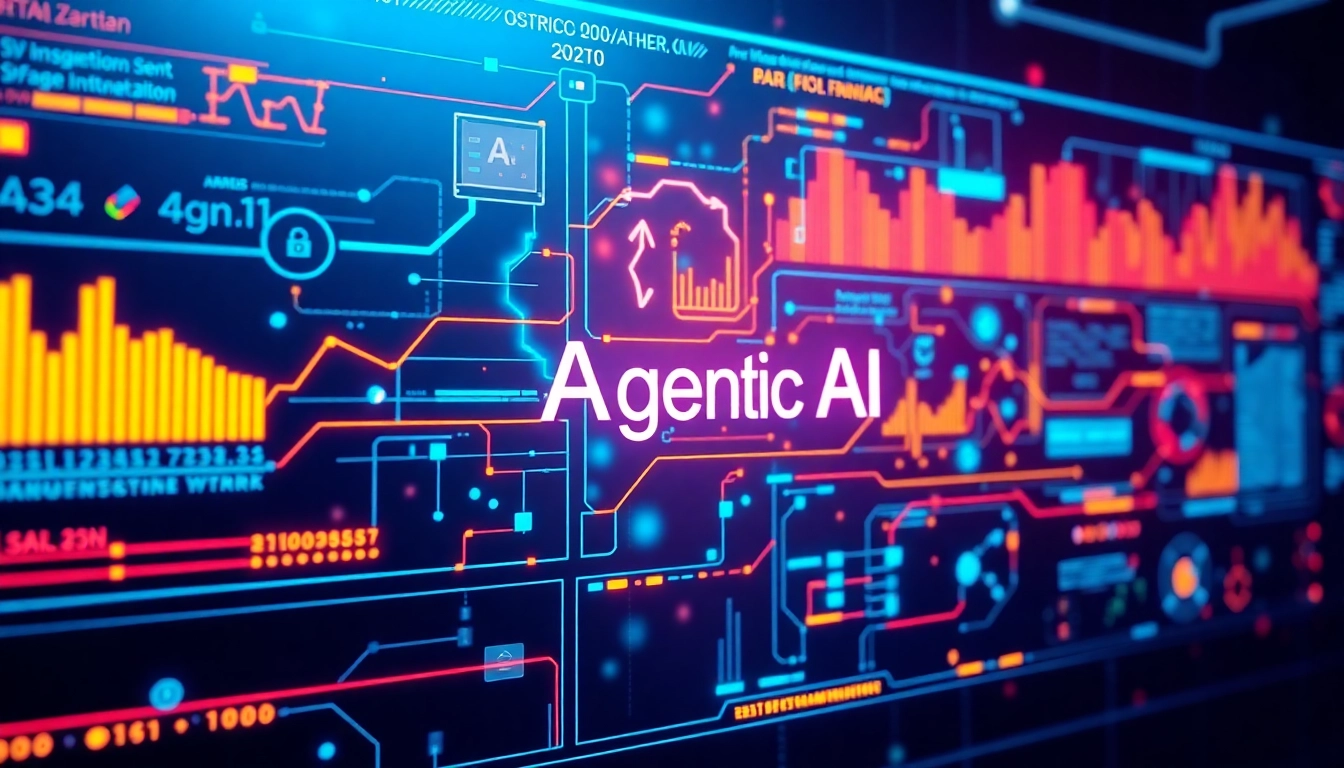Introduction to AI Detection
Artificial Intelligence (AI) has transformed many aspects of daily life, from simple tasks to complex decision-making processes. However, as AI technology advances, the need for ai detection has arisen to ascertain the origins of digital content. Recognizing whether content is generated by humans or machines is crucial for various sectors, including education, content creation, and digital marketing.
What is AI Detection?
AI detection refers to the process of identifying whether a piece of text has been created by an AI model or a human author. This involves analyzing linguistic patterns, grammar, and contextual elements within the text. By employing sophisticated algorithms, AI detection tools aim to discern the subtle differences between human-created content and that generated by AI models such as GPT, Claude, and others.
Importance of AI Detection
The significance of AI detection lies in its ability to maintain authenticity and integrity in numerous fields. In academia, for instance, it serves as a tool to uphold ethical standards by preventing academic dishonesty, ensuring that student submissions reflect their original thoughts and efforts. In the business realm, understanding content authorship can influence brand reputation, especially in marketing strategies and customer engagement. Overall, AI detection plays a vital role in preserving the value of human creativity in an increasingly automated world.
Common Use Cases for AI Detection
AI detection tools have found applications across various domains, including:
- Academic Integrity: Schools and universities use detection tools to ensure that students are producing original work.
- Content Moderation: Platforms utilize AI detection to screen user-generated content for authenticity and compliance with guidelines.
- Brand Protection: Businesses may assess the origins of digital marketing content to maintain brand voice and consistency.
- Legal Purposes: Detecting AI-generated documents in legal contexts can help establish authenticity in evidence.
How AI Detection Works
Technical Aspects of AI Detection
AI detection systems utilize a variety of technical methodologies to analyze text. Initially, these systems employ linguistic analysis techniques, where the structure, syntax, and semantics of the text are examined. Techniques such as natural language processing (NLP) are integral in breaking down the text into manageable components for scrutiny.
Algorithms Behind AI Detection
There are several algorithms in use for AI detection, each with its unique approach:
- Statistical Analysis: By applying probability models to word frequencies and co-occurrences, these algorithms can identify patterns distinct to human writing versus AI-generated content.
- Machine Learning: Advanced models are trained on vast datasets that include both human-written text and AI-generated text. Over time, they learn to distinguish between the two based on observed features.
- Deep Learning: Neural networks, particularly recurrent neural networks (RNNs) and transformers, have proven effective in analyzing complex linguistic structures, making them powerful tools for AI detection.
Limitations of Current AI Detection Technologies
Despite their sophistication, current AI detection technologies do face limitations. For one, they can produce false positives, misclassifying human-written text as AI-generated. Furthermore, the evolving nature of AI models means that detection tools must continuously adapt, as new models are developed with improved capabilities. Finally, the detection process can sometimes lack transparency, making it difficult to understand how determinations are made.
Implementing AI Detection Tools
Choosing the Right AI Detection Tool
When selecting an AI detection tool, organizations should consider several factors. First, the accuracy of the detection algorithm is paramount. Look for tools that have been benchmarked against extensive datasets to ensure reliability. Additionally, the user interface and ease of integration with existing systems are critical for ensuring smooth adoption and usability.
Integrating AI Detection into Existing Systems
To effectively incorporate AI detection into current workflows, businesses should follow a structured approach:
- Assessment: Evaluate current content creation and review processes to identify where AI detection can add value.
- Training: Provide training sessions for staff on how to use and interpret AI detection results.
- Pilot Testing: Implement the tool in a controlled setting to gauge its effectiveness and any potential impact on productivity.
- Feedback Loop: Establish a feedback mechanism to collect insights from users and make necessary adjustments.
Best Practices for Using AI Detection
To maximize the effectiveness of AI detection tools, consider the following best practices:
- Regularly calibrate detection tools to adapt to advancements in AI writing capabilities.
- Combine AI detection results with human review to ensure nuanced understanding of the text.
- Stay updated on legal and ethical considerations regarding AI detection in your specific field.
Evaluating AI Detection Performance
Benchmarking AI Detection Tools
Benchmarking involves comparing the performance of different AI detection tools to identify the most effective one. Organizations should conduct tests using a standardized corpus that includes a mix of AI-generated and human-written text. Metrics such as precision (true positive rate) and recall (sensitivity) are crucial in these evaluations.
Metrics for Assessing Effectiveness
To measure the effectiveness of AI detection systems, organizations should track various performance metrics, including:
- Accuracy: The percentage of correctly identified AI-generated and human-written text.
- Response Time: The speed at which the tool provides results post-analysis.
- User Satisfaction: Gathering feedback from users on the usability and trustworthiness of detection results.
Improving Accuracy in AI Detection
Enhancing the accuracy of AI detection can be achieved through several strategies:
- Utilizing diverse training data that encompasses various domains and writing styles.
- Regular updates to the detection algorithms to account for emerging AI technologies and writing trends.
- Implementing user feedback mechanisms to continually refine the detection criteria and methodologies.
Future of AI Detection
Emerging Trends in AI Detection
The field of AI detection continues to evolve at a rapid pace. Key trends include the integration of more advanced machine learning techniques—such as reinforcement learning—which allow systems to adapt and learn from user behavior. Furthermore, as regulatory frameworks around AI become more established, organizations will need to align their detection tools to comply with these standards.
Potential Challenges Ahead
As AI detection technologies evolve, several potential challenges must be addressed. The continuous sophistication of AI models could outpace detection capabilities, leading to increased instances of false negatives. Additionally, public skepticism regarding the reliability of AI detection tools may affect adoption rates across organizations.
Innovations on the Horizon for AI Detection
The future holds numerous innovations for AI detection, including:
- Enhanced Natural Language Understanding: Future tools may feature improved capabilities in understanding context, tone, and intent, allowing for more precise detection.
- Real-Time Detection: The development of systems that can analyze content in real time will empower platforms to screen for authenticity before content goes live.
- Greater Use of Blockchain: Blockchain technology may provide solutions for tracking the authorship and origin of digital content, enhancing overall accountability.



